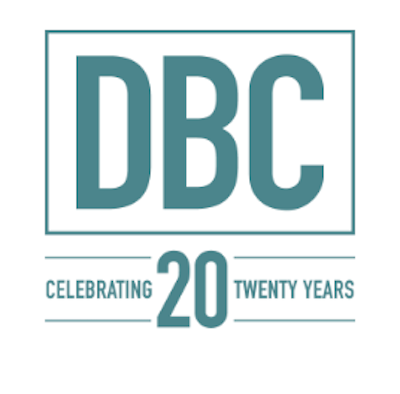FOR MANY MAILERS, protected mail dates have long gone the way of the Johnson Box.
Most consumer catalogers stopped protecting dates a long time ago as technology enabled them to accurately determine the most profitable times to mail.
In addition, mailers say they have gradually lost faith in the U.S. Postal Service’s ability to deliver the piece on the projected date. They note that the slowdown has increased over the past six months and became even more exacerbated during the holidays.
But some still believe competition in the mailbox is not always a good thing. Norm Thompson flat out denies rentals to highly competitive and promotional offers during the holiday season and around key dates.
And fundraisers – long avid protectors of mail dates – typically block dozens of weeks each year, primarily during renewal efforts and profitable seasons, to safeguard donors who have only so many dollars to contribute. These mailers say the benefits far outweigh the loss of list rental income.
Disabled American Veterans, for example, limits the amount of mail its donors receive through tight restrictions on rentals and exchanges. “The primary interest of DAV is to ensure the continued productivity of our donor database,” says Jim Walding, manager of list marketing and procurement. “That is the supreme goal.”
To meet that goal, DAV blocks 16 weeks each year during five key mail seasons in which no outside mailer is permitted to mail to its donor base. In addition, throughout the remainder of the year, the organization restricts its outside database use to one nonprofit and one commercial mailer within any two-week period of time, says Walding.
DAV mails 65 million pieces each year and in 1998, it collected $92.5 million via direct mail.
Walding believes rising production and postal costs, fierce competition for names and a “bit of a crumble” in acquisition programs have pushed the typical three-to-four month clearance process for fundraisers to nine months. “Nonprofits are lining up to make reservations farther in advance to make sure they have access to the names,” he says. Requests are often booked a year in advance, and DAV has long maintained standing orders from large nonprofit mailers during key seasons. New nonprofits “fill in” with mailings around those dates, Walding says.
DAV doesn’t think twice about the loss of list rental income, he notes, since “the primary value for Disabled American Veterans is from donations, not from list rentals.”
Out of 1.5 million nonprofit organizations, 200,000 currently hold Standard A permits, according to Lee Cassidy, executive director of the National Federation of Nonprofits.
Another nonprofit mailer, The American Diabetes Association, also protects dates by blocking one week on either side of its mail date each month for a total of 24 weeks each year. The association puts 12 million renewal and 20 million acquisition pieces in the mail annually, collecting about $20 million in donations.
Joanne DelGiorno, director of direct response marketing for the association, says that even though vigorous attempts are made to protect mail dates, competitive offers can still find their way to mailboxes at the same time. For the past six months, she has noticed a slowdown in the mail stream that became more “frequently exacerbated” over the holidays. She has documented mail delays of up to two weeks.
“Mailers would have the best of intentions of mailing their drop dates,” she says, “but then due to the huge influx of catalogs and holiday mail, a lot of mail got delayed and the offers were hitting the mailboxes at the same time as us.”
In December, four competitive offers appeared in DelGiorno’s mailbox on the same day as the Diabetes offer. After validating mail dates, she determined the cause – a slowed mail stream. “We know the date the mailing dropped and it shouldn’t have been hitting at the same time,” she says. She adds that the slowed mail did not affect response.
Patricia Davis, acquisition manager for cataloger Norm Thompson, says three customers complained about receiving holiday catalogs after the holidays. One, mailed in mid-November, was received the first week in January. Davis wonders how many customers were affected, and adds that a decoy system analysis determined that “arguably” 10% of mailed catalogs never reach the intended destination. “The reality is that we’re not getting in home when we think we are,” she says.
And for that reason, Davis feels it can be futile to regularly sacrifice list rental revenue to protect mail dates. However, the cataloger does conduct annual mail-date studies to determine when highly competitive and start-up offers are in the mail and denies rentals to those mailers within a three-week spread around its own mail date. Last year, she says, the firm forfeited $80,000 in list rental income by denying rentals to promotional mailers.
“I’m not putting promotions out there to their lists, so I don’t want them doing promotions to my customers,” she says.
The best way to ensure that the product stands out above the crowd is by improving merchandising and creative and by acquiring the most productive acquisition files, Davis adds. “We’re making sure all elements of the catalog are clicking and relative to the customer so when they get three to four catalogs in the mail, ours is the one they pick up.”
At consumer cataloger Eximious, CEO Jeff Parnell says he seldom sees requests for protected mail dates and never requests them. “I get the sense that industrywide we’re all constantly evaluating plans for test dates and that’s the date we’ll mail,” regardless of who else is also planning to mail.
Experts say that one cataloger’s best mail dates are also the best for many others. “That’s when the fish are running,” says Davis.
Moreover, mailers say that the old RFM formula still works. If a consumer is in a buying mode and spending lots of money via direct marketing, any mailer could be a winner.
Eximious often depends on list exchanges. While net names and rates are often key elements of the negotiation, protected dates are typically off the table. “If you become very difficult to work with, you’re going to hurt yourself,” Parnell says. “You’re not going to get names.”
Teri Oliver, Coldwater Creek’s circulation director, agrees. “It’s not practical for us to ask other mailers to protect our mail dates when we’re renting names from them, nor is it practical for us to protect mail dates from mailers taking names from us.”
In addition, catalogers say mass participation in cooperative databases has all but killed off the concept of a unique name, and mailers have lost all control over who’s mailing what offers when. “When cooperative databases became stronger, there was no rational for protecting mail dates,” says Parnell. “Your names are out there. If somebody wants to mail your name, they’re going to. There are not that many closed universes anymore.”
Some 2,000 catalogers participate in the industry’s popular catalog and consumer co-op databases – Abacus’ Alliance, Experian’s Z-24 and Acxiom’s SmartBase. There are roughly 10,000 to 11,000 titles in circulation.
Another factor contributing to the demise of protected dates is the increase in shopping malls. The number of malls has grown by about 25%, from 573 in 1986 to 714 in 1998, according to the International Council of Shopping Centers.
Susan Giampietro, senior vice president of the catalog division for The SPeCIALISTS Ltd., says, “You can get a glut of catalogs, just the way you can walk through the mall to get a glut of stores. I don’t think it’s hurting business. Competition is a good thing. It always has been.”
Most B-to-B catalogers don’t protect mail dates and they don’t need to because they don’t rent or exchange names with competitors except for the rare occasion. “We mail so often and so frequently that it doesn’t make sense to block dates,” says Lynn Stephen, circulation analyst for Executive Greeting Inc.
Christine Grecco, vice president of B-to-B lists for Direct Media Inc., agrees, saying, “[B-to-B] mailers are very protective of their customers and therefore do not allow anybody who is slightly similar in product line to rent or exchange their file. Only on the very rare occasion.”
And at Crain Communications, there are exceptions to the rule.



